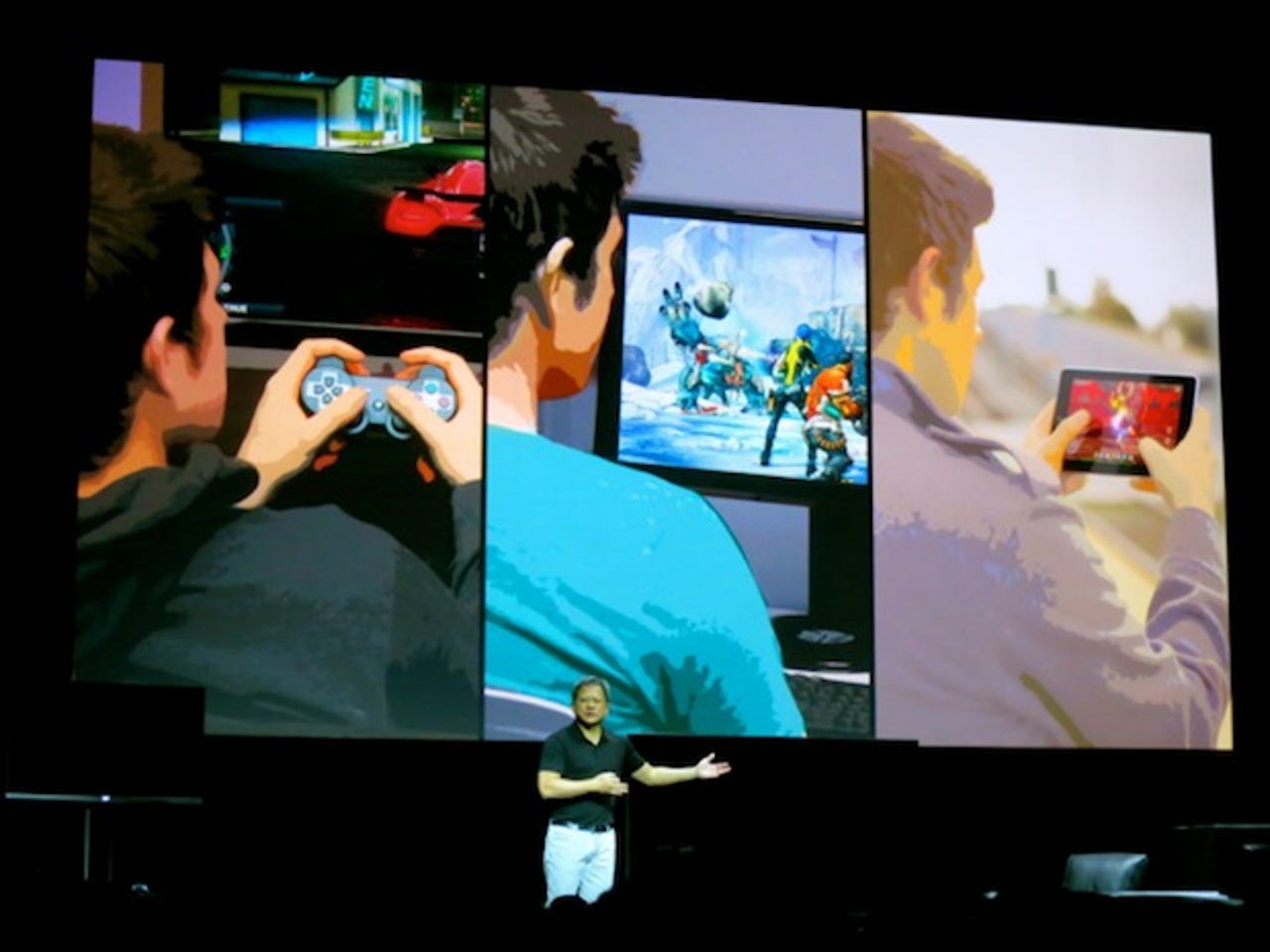CES 2013: Nvidia Grid servers might not be as flashy, but they're powerful


LAS VEGAS -- A nightclub in a hotel that used to host the Playboy Club until last year doesn't seem like the most obvious venue to introduce a host of new servers, but Nvidia took a chance and went with it on Sunday.
See also:
Trying to get its news out the door ahead of a full slate of press conferences all day tomorrow, Nvidia rolled out a number of introductions over the course of two hours on Sunday evening.
Some of the debuts were much flashier and commonplace for the likes of the International CES -- namely a new handhold gaming console dubbed (for now) as Project Shield and the Tegra 4 quad-core mobile processor.
One of the key facets to the Shield portable console is that it accesses a user's games (bought from Google Play) through the cloud.
But the way it is going to get there is through the new Nvidia Grid server, as seen in the diagram below displayed during the media event.
Now, the announcement and debut of a stack of servers on stage didn't exactly draw the biggest applause at the Rain nightclub at The Palms hotel on Sunday night. (This is CES, after all -- not Oracle OpenWorld.)
But the purpose it will serve -- not to mention Nvidia's ambitions here -- cannot be ignored.
On the hardware front, the Nvidia Grid server is designed to simultaneously deliver up to 36 times more HD gaming streams than first-gen cloud-gaming systems, while reducing latency by up to 30 milliseconds compared to prior solutions.
It also appears that Nvidia is trying to get its own cloud gaming ecosystem or market of sorts off the ground. So far, the chip maker has signed on six, relatively unknown cloud gaming companies from around the world to use Nvidia Grid for delivering their games to global broadband providers.
But for the end user, it's about what Nvidia Grid can change that matters most. If everything works as it should (which, incidentally, did not happen during Sunday night's press conference), Grid is the power that essentially moves HD gaming to the cloud, reducing or eliminating the need for discs altogether as well as freeing up tons of local storage space on gaming devices.
Basically, Nvidia wants to make gaming as easy as streaming a movie on Netflix or listening to music on Spotify. That concept will catch on more with the help of eye-catching products like Shield, but they'll need Grid to make it happen.
More coverage on ZDNet from CES 2013:
- CES 2013 preview: Tech companies don't have the living room figured out yet
- Winter CES 2013 hasn't even started, but I'm already over it
- CES 2013: AMD-powered Vizio Tablet PC runs Windows 8
- Dear tablet vendors: if you can't announce a price with your tablet, you're dead to us
- CES 2013 preview: Tech in Transition, or As I Lay Buying
- Qualcomm CEO previews CES keynote in Charlie Rose interview
- CES 2013: Seagate Wireless Plus HDD fills in for the cloud for mobile users
- Computing evolution, 'sensorization' ushers in new digital era
- CES 2013 preview: A virtual tour of the show
- CES 2013: Seagate Wireless Plus HDD fills in for the cloud for mobile users